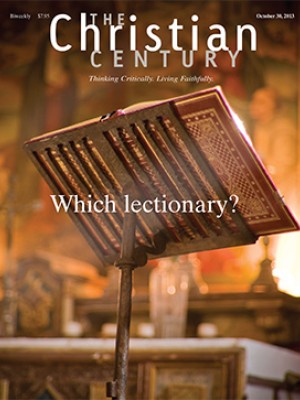After long slump, number of Catholic seminarians on the rise
After decades of glum trends—fewer priests, fewer parishes—the Catholic Church in the United States has a statistic to cheer: more men are now enrolled in graduate-level seminaries—the main pipeline to the priesthood—than in nearly two decades.
This year’s tally of 3,694 graduate theology students represents a 16 percent increase since 1995 and a 10 percent jump since 2005, according to Georgetown University’s Center for Applied Research in the Apostolate (CARA).
Seminary directors cite more encouragement from bishops and parishes, the draw of Pope Emeritus Benedict XVI and the social-justice-minded Pope Francis, and a growing sense that the church is past the corrosive impact of the sexual abuse crisis that exploded in 2002.
Read our latest issue or browse back issues.
Ultimately, it was “a calling in my heart,” says Kevin Fox. He walked away from his electrical engineering degree and a job in his field, working with CT scanners, to enter St. Mary Seminary in Wickliffe, Ohio, this fall.
“I always had an inkling that I might want to be a priest and my parish priest told me he thought I might be called,” said Fox, age 24. “But I put it aside.”
With a fresh degree from Case Western Reserve and his first post-graduation job, Fox soon realized the secular path “wasn’t filling my soul with joy.”
Now, after years of pure science, Fox is immersed in pure theology—and loving it. The challenges of the culture, such as crude jokes from strangers about the abuse crisis, have not dissuaded him.
“I feel the church has done a great deal to deal with (preventing) abuse and the seminary took a lot of care in screening and training us to make sure we are the good guys,” Fox said.
Fox is one of 72 students currently enrolled in the undergraduate and graduate programs at St. Mary, the highest number in decades, said Mark Latcovich, president and rector.
Craig Cox, rector of St. John’s Seminary in Camarillo, California, said the upward trend leading to their current record class of 92 graduate seminarians began six years ago. He also cited “a renewal of idealism,” a stronger push for vocations by priests and bishops, and “receding damage” from the abuse crisis.
Cox says his students range in age from 22 to 45. While they’re younger than previous classes, they bring “a great level of maturity” to get through a rigorous admissions process.
CARA’s new statistical look at the church shows the seminary-to-priesthood patterns and other shifts in American Catholic life:
• New ordinations won’t catch up to the thousands of retirements and deaths of ’60s-era priests: the total number continues to slide from 58,632 priests in 1965 to 39,600 in 2013.
• The number of parishes without a resident priest is still growing—up from 3,251 in 2,005 to 3,554 now.
• A two-decade-long trend of parish consolidations and closings has led to fewer parishes where pastoral care is led by a deacon, religious sister or brother, or a layperson. Their number peaked in 2005 at 553 and now is down to 428.
Blame demographics, says CARA’s senior research associate, Mary Gautier.
“Catholics don’t live where they lived 15 years ago. They’ve moved south and west, from urban to suburban areas and they didn’t take their parishes with them,” Gautier said. “The smaller, older lay-led places without a resident priest are often the first to be closed.”
The church keeps growing—1 percent a year. CARA offers two totals, varying by the source: 78.2 million if you go by self-identification recorded in surveys; 66.8 million if you go by the “Official Catholic Directory” where parishes report their numbers.
Meanwhile, the declining numbers of people who identify with Protestant denominations has led to falling numbers in their seminaries since 2006, said Eliza Brown, spokeswoman for the Association of Theological Schools, which represents more than 270 seminaries.
Between 2006 and 2012, the number of students enrolled in master of divinity programs at Protestant and nondenominational Christian seminaries fell from 31,532 to 29,249, Brown said.
“Their congregations are less able to afford full-time, theologically educated clergy,” she said. “And students, who graduate with debts, can’t afford to take part-time or low-paying pulpit positions.” —USA Today





